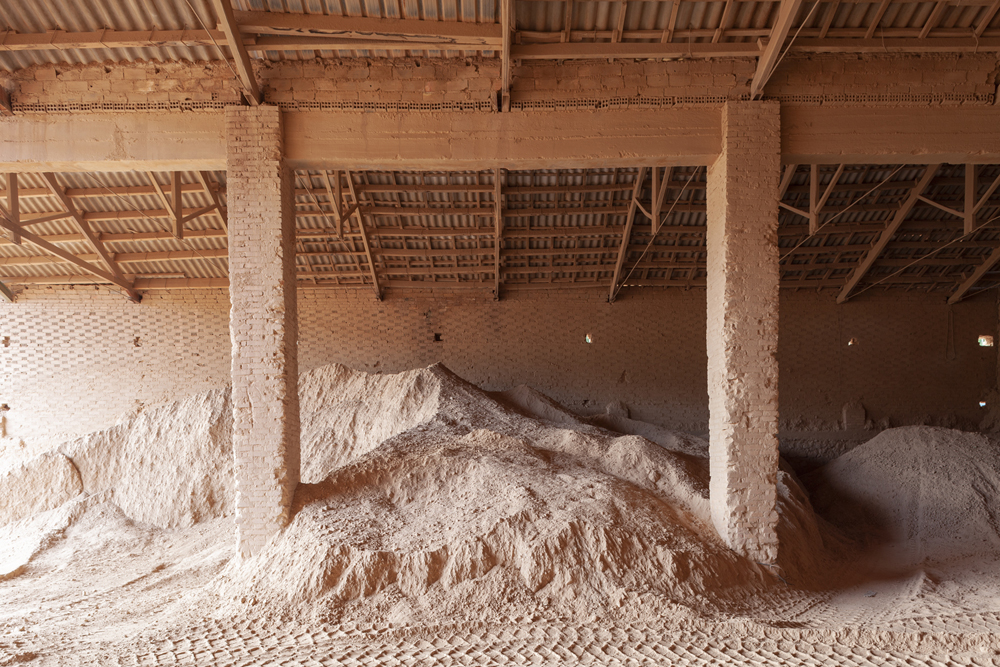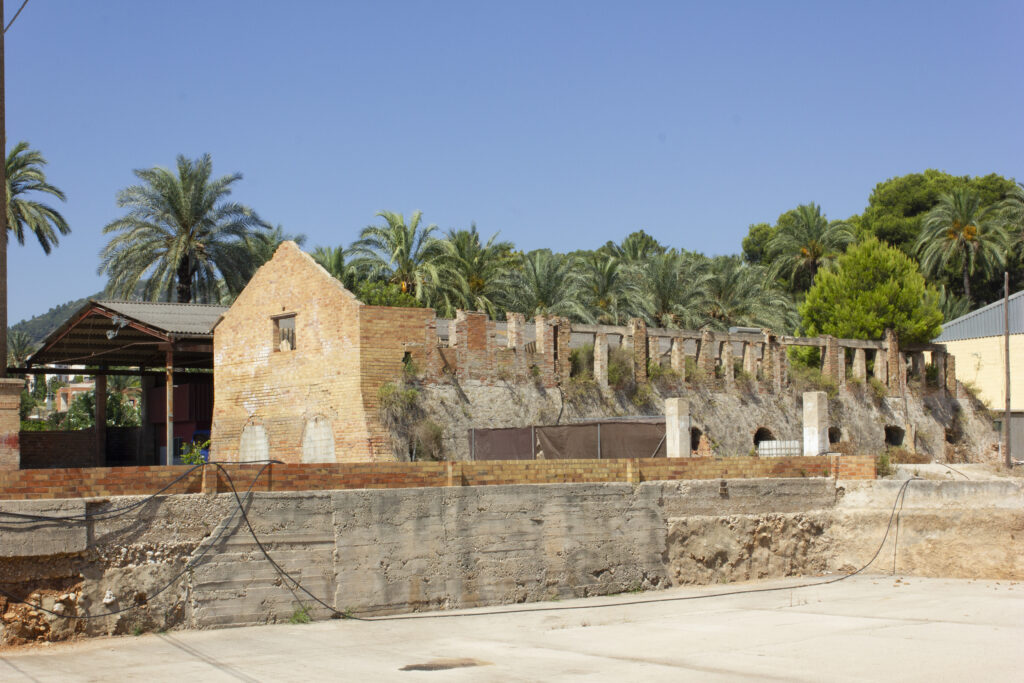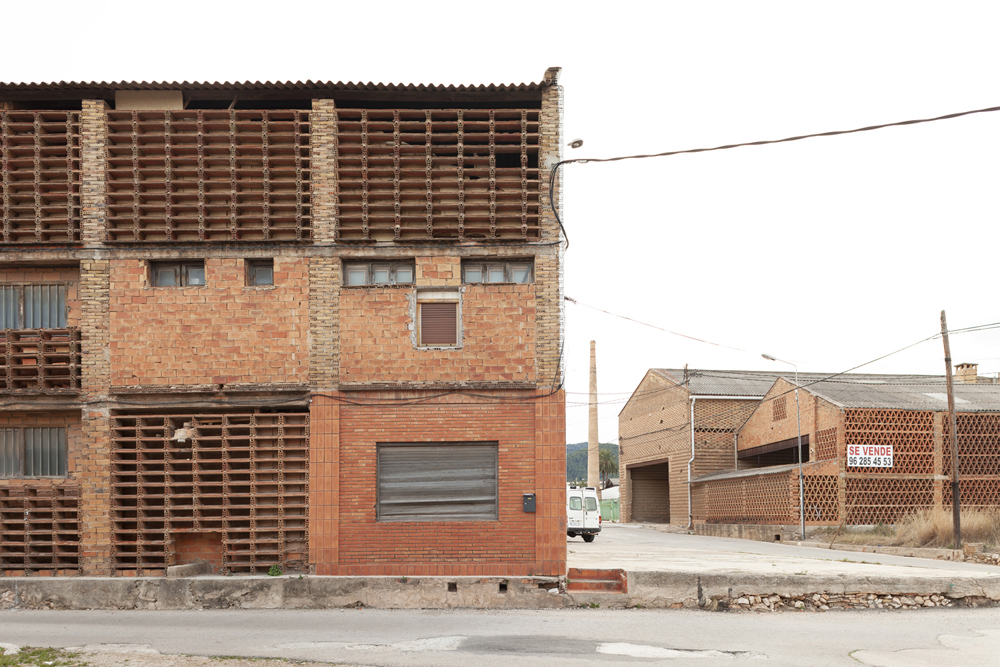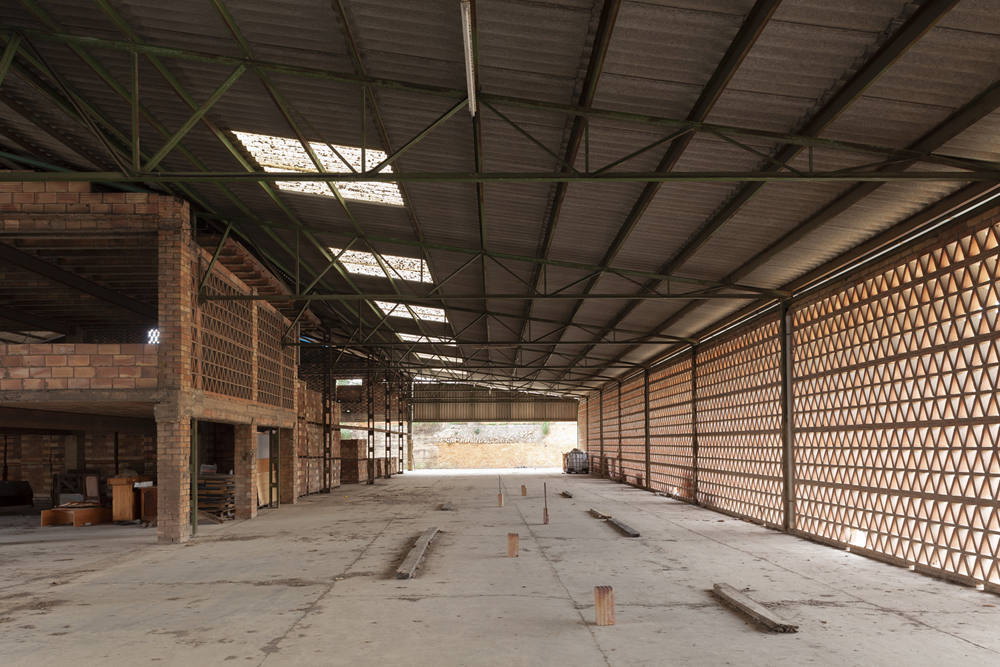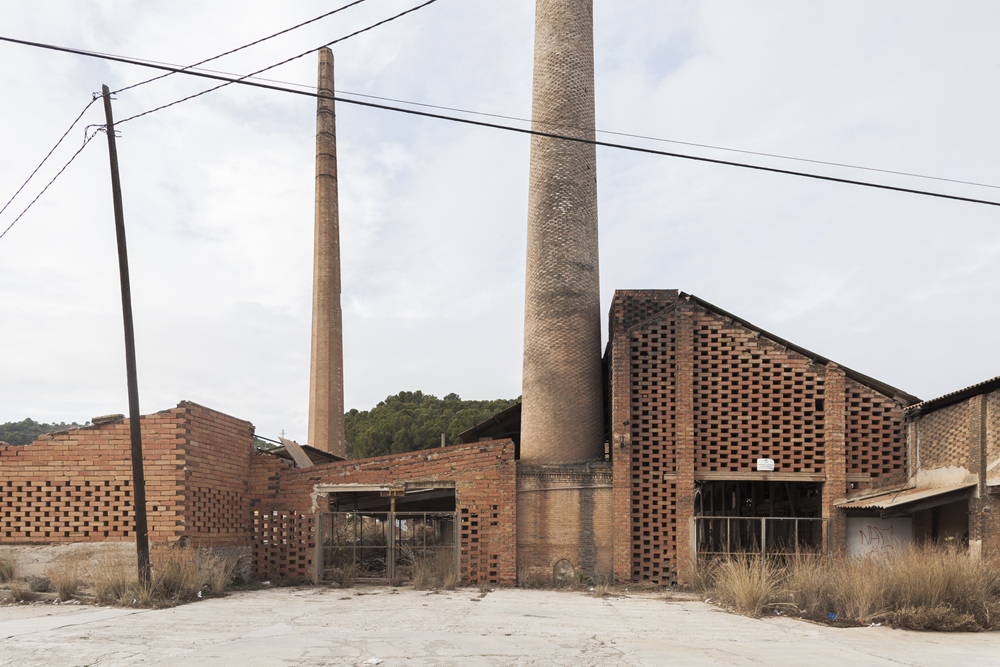Historical Context
Factories
The Hoffman furnace, built at the end of the 1940s, made it possible to maintain a continuous fire, without the need to put out and light the furnace with each production batch. In order to maintain the internal temperature, and circulate the fire in this way, it was necessary to build huge chimneys to ensure sufficient natural pull. It was this technological innovation that modified, in large part, the industrial landscape of Els Rajolars as we know it.

A brief history
Beginnings
Although traditionally Oliva’s predominant activity was agriculture, there is also evidence that, in past times, some ceramic production already took place. Likewise, there is evidence of the existence of ceramic workshops in Oliva since the Roman period.
At the beginning of the 20th century, the Els Rajolars area comprised an agricultural landscape, dominated by non-irrigated crops for the production of raisins. Called “sequers”, they gave their name to the land that was later occupied by the factories.
Boom and Consolidation
During the years of Primo de Rivera’s dictatorship, the demand for construction materials grew, owing to the public works programs, and the number of companies manufacturing ceramic products increased in general.
In 1910, the first seven factories were built in the village. Four years later, in 1914, another five were added, but it was really from 1931 that all kinds of floor tiles, roof tiles and bricks begin to be manufactured in Oliva, and distributed outside the region. Thus began the decade during which the heavy ceramic industry was definitively established in Oliva. Twelve other companies were registered during the 1930s.
A few years after the end of the Spanish Civil War, there was a significant boom in demand across the country for all construction-related products, including floor and roof tiles, and other ceramic products. The 1940s saw the continued growth of the brick industry in Oliva. Between 1946 and 1957, another eight companies were registered, bringing the total number of factories in Els Rajolars to around thirty.
Driven by the need to respond to demand, Oliva’s ceramic industrialists initiated a process of modernisation to increase the productive capacity of their factories. This brought with it one of the most decisive factors in the transformation of the built environment of Els Rajolars: the arrival of the Hoffman furnace, enabling continuous production, and which progressively replaced the traditional Morunos furnaces previously used by the factories.
This industrial growth also led to a growth in Oliva’s population, with the arrival of numerous workers, mainly from the regions of Andalusia and Castilla-La Mancha, along with their families. Oliva’s population increased considerably throughout these years, from about 8,000 inhabitants at the beginning of the century to almost 17,000 in the 1970s.
Decline and abandonment
The 70s and 80s saw the beginning of a stage of decline during which the activity of these companies, very sensitive to demographic cycles and changes in the construction sector, dwindled until it practically disappeared.
The factors that led to this situation include certain structural deficiencies, such as poor marketing capacity, lack of technological updating and the low added value of the products produced, along with a human capital with little training. This meant that these industries were greatly affected by the arrival of the concrete block and competition from certain Manchego municipalities, which were able to produce at a lower price.
Slowly all the factories closed, paving the way for a process of progressive abandonment that culminated in 1982 with the municipality’s new General Plan, which listed the urban area of Els Rajolars as a zone for which it was necessary to find new uses, replacing the established buildings: the plan proposed a shift towards residential and tertiary uses and explicitly excludes industrial use. This organisational change brought the industrial stage of the area to a definitive end.
Photographic archive
Testimonials
- Roman Peiró i Morell
- Llibret de l'Associació Cultural Falla Barri Sant Francesc d'Oliva - 2019
- Enrique Escrivà Vicens
- Llibret de l'Associació Cultural Falla Barri Sant Francesc d'Oliva - 2019
- Miquel Font
- Llibret de l'Associació Cultural Falla Barri Sant Francesc d'Oliva - 2019
- José Antonio Navarro Cerdà
- Llibret de l'Associació Cultural Falla Barri Sant Francesc d'Oliva - 2019

